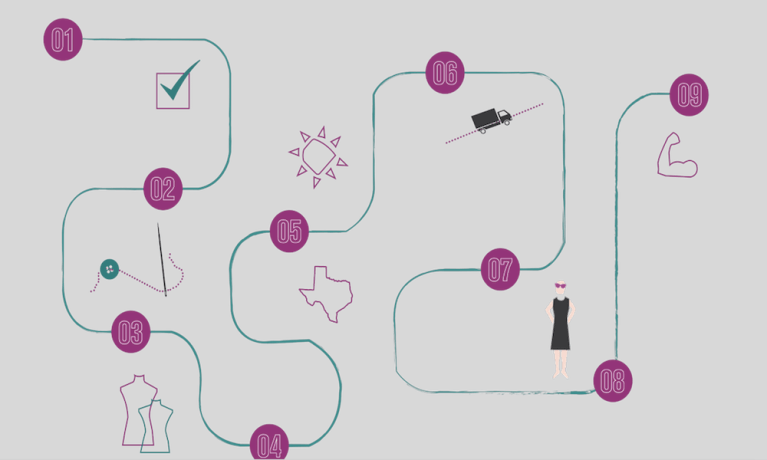The “What’s your size?” shuffle is a specialized horror that female consumers from all walks of life complain bitterly about. It’s the sort of thing customers should be able to recite automatically.
But, of course, it isn’t.
There are many factors to take into consideration: What type of clothing is it? What season is it? What store is one shopping at? How is one paying for the item in question? — all things that may not seem like they should be relevant to knowing one’s size, but for women trying to shop for clothes, they usually are.
Kit Founder and CEO Merin Guthrie observed in a recent interview that human beings have mastered space travel and put smartphones in the pockets of every American adult. What they have not managed to do as of the second decade of the 21st century is figure out how to consistently craft women’s clothing that fits them properly.
And, she noted, it seems to a problem that hits women’s fashion harder then men’s, despite the reputation women have for being the more discerning and fashion-forward gender. Women’s clothing, Guthrie said, may have more options built in at more levels than their counterparts, but they don’t have nearly the same options.
Kit aims to fix that — from its Dallas headquarters — by taking customers’ measurements and actually sewing their outfits to fit just right.
Advertisement: Scroll to Continue
“At the end of the day, one has a ton of time to shop, wading through lackluster offerings … our ideal clothing company [is built] from the ground up; one designed to serve its customers through great fits, quality and service.”
How It Works
To tap into the Kit lifestyle, a customer must first visit the company’s digital boutique so they can get their sizing entered. And sizing on Kit is very different than the average experience, as no sizing, not even a general description of a size (think small, medium or large) appears anywhere. Instead, customers pick the clothes they want, and the sizing is adjusted to their specific measurements.
The reason, according to the brand, is pretty simple: Regular sizing doesn’t work and makes most shoppers miserable trying to figure it out.
Instead, Kit designed a very detailed sizing system that asks users for all kinds of informaiton beyond height, weight and measurements. Users can pick from five body types — and even a secondary tier if they feel they’re between two. They also get to fill in information on things like torso length and limb proportions if they so desire.
From there, customers can pick the fabrics they want, make any other customizations desired and send off the order. The seamstress team in Dallas gets to work. Within a few weeks, the customer has a new shirt.
The Kit Shopper
According to Guthrie, Kit shoppers come from a variety of backgrounds but have a single point of view in common.
“We exist to serve a specific customer who is busy, time is at a premium for her and she’s coming to us because she’s hoping she can have a better experience in terms of product and holistic retail experience than she’s getting elsewhere,” Guthrie noted in an interview with Digital Commerce 360.
Which means what Kit must always most crucially be able to do, she noted, is pull in a variety of fashion perspectives so the rather diverse base of Kit shoppers can find something they want created specifically for them. Constant customer focus, according to Guthrie, has been crucial to the brand’s success so far — with online sales growing 50 percent year over year in 2017, a growth rate the firm would like to maintain (between 35 percent and 75 percent is the target annual growth rate) through 2018.
The challenge, of course, is making sure this goal doesn’t counteract with its main goal of creating high-quality clothes for a reasonable cost.
“We have grown through our level of service and quality,” Guthrie said. “If that falls off, then we’ve sabotaged the whole model. I don’t want too much growth to come at the cost of the sustainability of Kit.”




